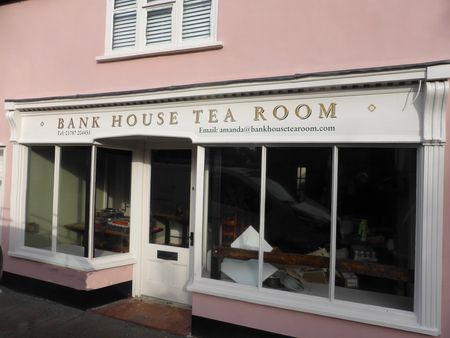Bures-online.co.uk
Serving
the communities of Bures St Mary and Bures Hamlet


|
Bures-online.co.uk |
 |
 |
|
|
The History of Bank House Bridge Street Bures St Mary  Bank House, located in Bures near the Road Bridge, had been left abandoned and derelict for several decades before it was finally auctioned off in 2021. The property's hazardous condition prevented potential buyers from viewing the interior due to health and safety concerns, as the building was on the verge of collapsing internally. In 2021, Harry and Mandy Irwin acquired Bank House with a vision to transform it into a high-class tea shop. After nearly two years of unwavering dedication, they proudly celebrated the grand opening of Bank House Tea Shop on December 14th 2023. Harry, a skilled builder, took charge of most of the renovation work himself, only seeking assistance from specialised tradespeople like roofers and gas engineers when necessary. The remarkable renovation serves as a testament to the astonishing transformation that Bank House underwent from its previously dilapidated state. |
|
No8 and 9 Bridge Street, Bures St Mary. Bank House is listed at Grade
II building in Historic England's records, dated 1978.
Bank House occupies a position directly opposite St Mary's Church in Bures. In its present form the timber-framed and rendered structure dates from the late-18th or more probably the early-19th century and is likely to have been built as either two or three tenements by John Garrad who also owned a Tannery to the rear. John Garrad (1796 -1874)1851 lived at Secretaries, Malster, farmer, merchant and brickmaker employing 67 men. Of those, 8 were employed on two sailing vessels based at the Hythe, Colchester, with which he traded in bricks, malt, farm produce and coal. 1862 owned Bakers Hall, Butlers Farm, Ravensfield Farm, Pricketts Hall Farm and Pudneys Farm. Malting and Tan buildings. Brick Kilns in Alphamstone, Lamarsh and Bures Hamlet. 1838 purchased the White House from the Guardians of Sudbury Union
Miscellaneous Photos
Other Historical refreshment outlets in
the village
|